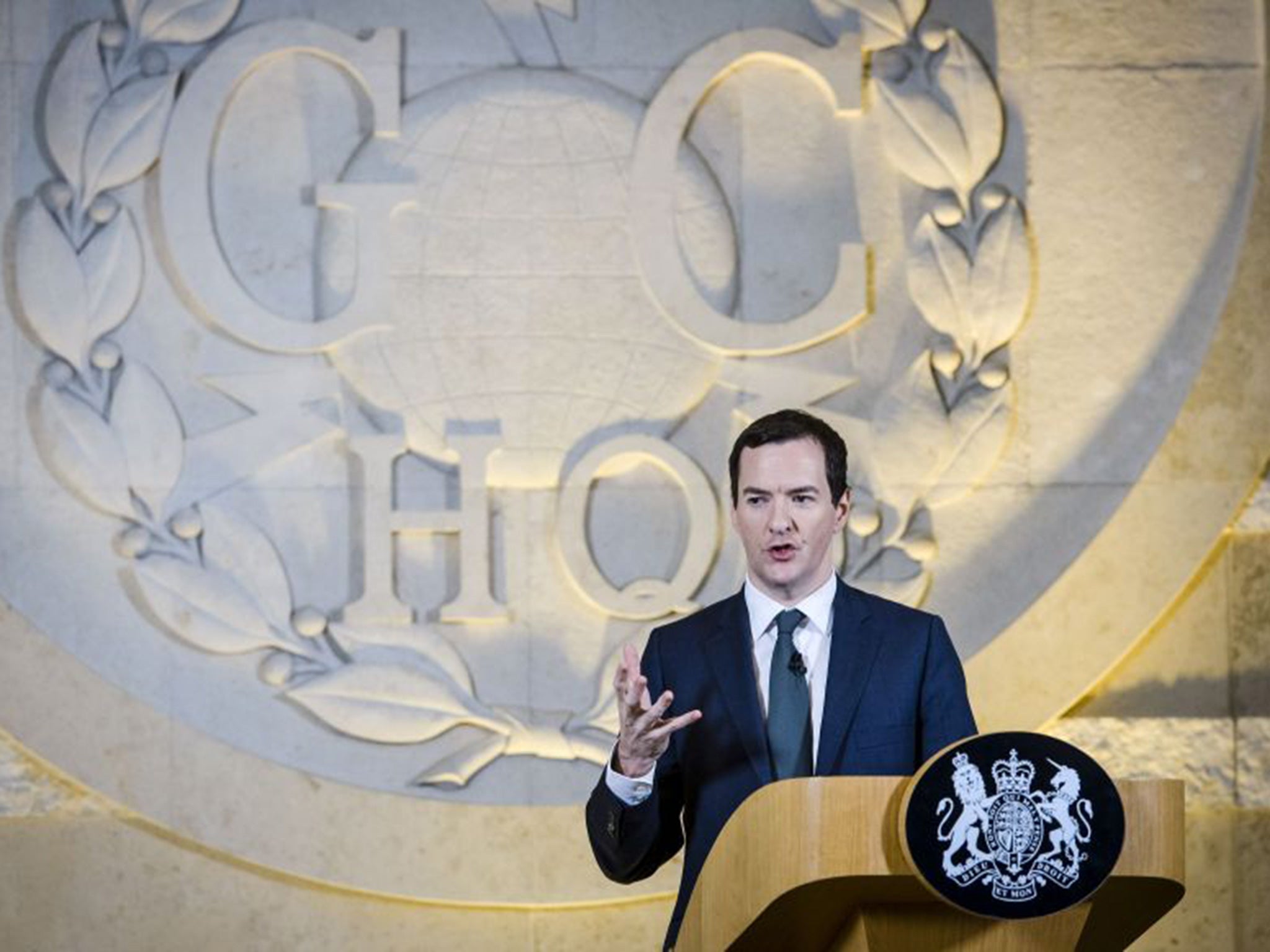Gloomy growth figures cast doubt on early rise in interest rates
Economy set to grow by barely 2 per cent over 2015 after figures revised

A faltering recovery delivered another unwelcome Christmas present for the Chancellor, George Osborne, as statisticians unexpectedly cut growth estimates for the economy.
The Office for National Statistics blamed weaker growth in the dominant services sector, particularly financial services firms, for lowering the pace of the overall economy’s expansion from 0.5 per cent to 0.4 per cent between July and September. The downgrade meant that the UK grew at the weakest pace since the end of 2012 over the quarter.
But the ONS also lowered estimates even more sharply for the April-June period, putting the economy on course for growth of barely more than 2 per cent over 2015 as a whole – down from nearly 3 per cent last year.
The downbeat data comes just a day after a surprise surge in borrowing left Mr Osborne all but certain to miss the Office for Budget Responsibility’s deficit target for the current financial year.
Although the US Federal Reserve raised interest rates for the first time in nine years last week, the latest growth blow – alongside near-zero inflation – is likely to deter the Bank of England from following suit for several months.
The looming referendum on membership of the European Union is also likely to weigh on the economy.
Philip Shaw, chief UK economist at Investec, said his forecast of a Bank of England rate rise in May was put in doubt by the weakness, adding: “At the risk of sounding unseasonably downbeat, figures released over the past couple of days have cast doubt on both the pace of fiscal improvement and the momentum behind the recovery. Indeed GDP growth over this year may be as low as 2.2 per cent. The latest numbers suggest that there will be even less pressure on the Monetary Policy Committee to consider raising interest rates early in the new year.”
The detail in the latest figures also showed an already unbalanced recovery even more dependent on shoppers’ wallets over the summer. Investment in items such as plant, machinery, equipment and buildings – so-called gross fixed capital formation – grew less than half as fast as previously thought, up 0.6 per cent over the quarter.
But the pace of consumer spending – accounting for more than half of the economy – ticked up from 0.8 per cent to 0.9 per cent, buoyed by the biggest annual increase in disposable income since 2010.
Meanwhile share of households’ total resources put aside in savings fell to 4.4 per cent, which along with the first quarter of 2015 is the lowest rate since 1963.
Samuel Tombs, chief UK economist at Pantheon Macroeconomics, warned: “The recovery clearly has exacerbated the economy’s long-standing weaknesses … the tremendous boost from declining saving to consumer spending since the recession cannot be repeated.”
Productivity figures meanwhile showed unit labour cost growth slowing to an annual pace of 2.0 per cent, an indicator of muted underlying inflation pressures which gives the Bank of England another reason to hold fire.
The Bank’s Governor, Mark Carney, has said he wants to see unit labour costs picking up before the Bank presses ahead with a rate rise.
Subscribe to Independent Premium to bookmark this article
Want to bookmark your favourite articles and stories to read or reference later? Start your Independent Premium subscription today.

Join our commenting forum
Join thought-provoking conversations, follow other Independent readers and see their replies